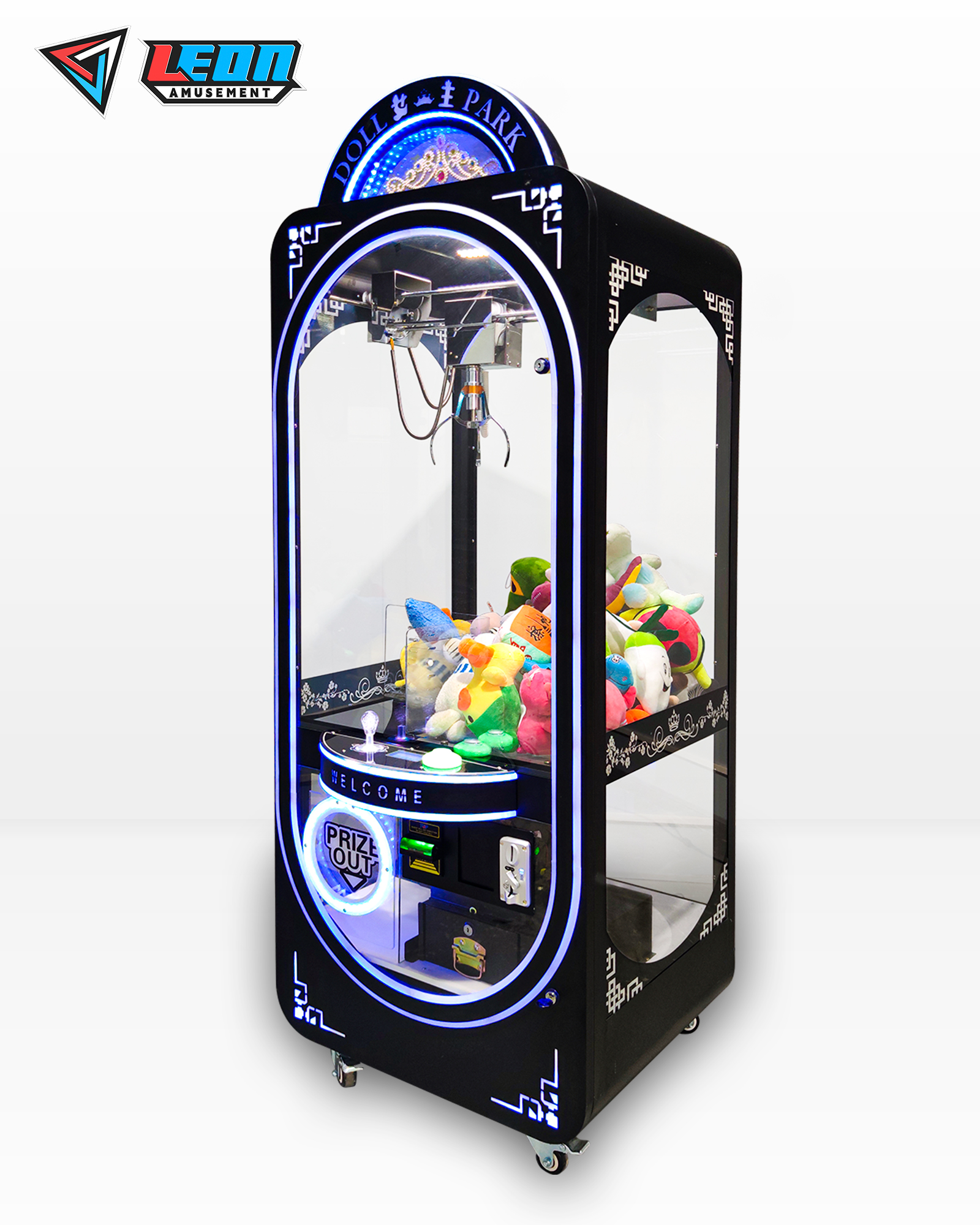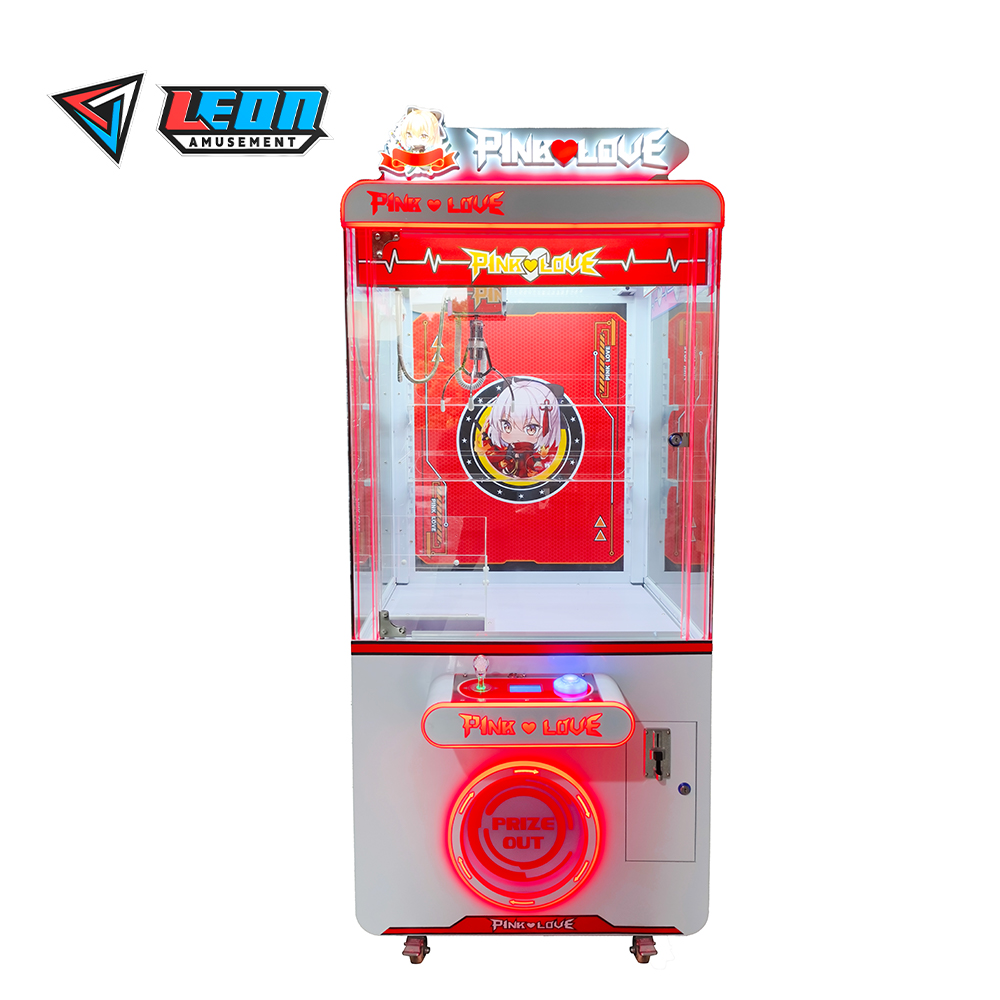The general profit margin for a claw machine is between 50%-70%. An initial investment of about 5,000-15,000 yuan can be made, while the average net profit per month can amount to 3,000-8,000 yuan. Generally speaking, it is possible to achieve a high return on investment by recovering costs in 3-6 months through precise adjustment of payout probability along with site selection strategies.
Table of Contents
ToggleBusiness Model and Revenue Sources
The business model of the claw machine is very simple; it mainly makes money by letting players insert coins and grab prizes. Each play incurs a certain fee, usually 1-5 yuan, depending on the machine’s settings and location. The core revenue of the machine comes from the difference between “number of coins inserted” and “cost of prizes”. In short, if a prize costs 5 yuan and a player has to spend a total of 20 yuan for a chance to get the prize, then the direct profit margin is about 75%.
Regarding the profit model, the income from the claw machine falls into two aspects: direct income, referring to the amount each player spends on each attempt, and extra income including repeated consumptions brought by the player constantly challenging and the attraction effect produced while other players are watching. This will encourage more people to participate, thus forming a “Matthew Effect” of increasing returns.
Another “non-monetary revenue” of the claw machine is attracting traffic and adding popularity for shopping malls and stores. In some large shopping centers or game halls, the surrounding area’s foot traffic can increase by as much as 15%-25% due to the presence of the claw machines. This phenomenon is more evident in areas that frequently attract families or young people.
Profit Margins and Cost Control
In general, the profit margin of a claw machine depends on three factors: the cost of the prize, the payout probability, and the difficulty setting of the game. By adjusting the relationship between these three elements, operators can realize flexible control over profits.
Prize Cost Control: Prizes are one of the core variables in determining profit margins. Normally, operators would buy prizes in bulk at lower costs. For example, the cost of a small plush toy in bulk could be only 3 yuan, but the retail price of a single prize in the market may reach between 10 and 15 yuan, creating a significant profit margin between the cost of the prize and the amount paid by players.
Payout Probability Setting: Generally speaking, the range of the payout probability of claw machines lies between 15%-35%. The lower the payout probability is, the higher the direct revenue of the machine will be. However, it may relatively reduce players’ willingness to take part in the games. Therefore, many merchants adopt a “ladder setting.” With each number of attempts without a prize, the payout probability increases, thereby enhancing the game’s attractiveness to players. Thus, the satisfaction of the players can be promoted while overall profits are guaranteed.
Game Difficulty Setting: The strength of grasping, time for grasping, and position of prizes are manipulated to accurately control the winning rate. There are even advanced models of these claw machines fitted with smart algorithms that automatically adjust the probabilities of grabbing in real-time by detecting coin insertion and prize grabbing. This precision in control can ensure not only the profits made through machines but also prolong the duration and frequency of players’ games to a certain extent.
For example, assuming a claw machine charges 2 yuan a time, with 150 attempts on average a day, the amount earned altogether would be 300 yuan. If the average cost of each prize is 5 yuan, and an average of 5 prizes are given in a day, then the cost for prizes is 25 yuan. After the prize cost has been subtracted, the gross profit per day is 275 yuan, and in a month it amounts to 8,250 yuan. If further deductions are made for rent, electricity, and maintenance costs, the net profit per month can still reach 4,000 to 5,000 yuan.

Investment Costs and Return on Investment
In the initial investment in the claw machine business, the main components include equipment purchase, venue rent, and prizes. There is a huge price difference when it comes to different types of claw machines. Basic ones cost around 3,000 yuan, while high-end customized ones may rise over 15,000 yuan.
Equipment investment only accounts for a part; another very important expense is venue rent. For large shopping malls and densely populated areas, most arcade machines lease their places on a monthly basis, between 500 yuan and 5,000 yuan, according to the traffic flow of the mall and regional competition. Some operators would instead cooperate with malls in revenue sharing, usually a “6:4” or “7:3” revenue split, which means that the operator bears all the costs of the machines and prizes while the mall participates in revenue sharing to reduce the risk of rental.
ROI is an important indicator to evaluate the feasibility of investment in a claw machine. In general, with appropriate site selection and operation strategies, it could recover the return on investment for a claw machine within three to six months. Assuming the total investment in one machine was 7,000 yuan, including equipment and prizes, the daily net profit would be about 150 yuan. Then, in about five months, it would recover the cost. From then on, the net profit each month will be pure profit. Thus, viewed from this perspective, the ROI of the claw machine is comparatively brilliant in the industry, and the business model has been labeled as “low investment, high return”.

Site Selection and Profit Strategy
Site selection determines the profit of a claw machine directly. Generally speaking, shopping malls, cinemas, game halls, and places near schools are areas where target users have a high flow and concentration. Statistics show that a claw machine put in a shopping center can bring about a daily income of 150-300 yuan, while the daily income of one put in an ordinary street shop will be only 50-100 yuan. Therefore, the proper location is the first step to the profitability of the claw machines.
In choosing a location, operators must comprehensively consider the following factors:
Foot Traffic: High-traffic locations bring higher exposure and potential players. Sites with an average daily foot traffic of more than 2,000 people are usually preferred.
Target Groups: Machines placed near areas where families go and where there are more young people have more player activity. In fact, compared with ordinary shopping malls, the average participation rate for machines placed near schools, entertainment venues, and parent-child parks can be as much as 30% higher.
Venue Rent: Although rents in high-flow areas are relatively high, the higher revenue return can cover rental costs. For example, in a large shopping mall in Beijing, the monthly rent for a claw machine is about 2,500 yuan, while its average monthly revenue can reach about 10,000 yuan, and net profit remains considerable.
Operating Costs and Maintenance Management
The operating costs of a claw machine mainly consist of electricity, prizes, and maintenance on a daily basis. In general, a single claw machine costs about 30-50 yuan per month for electricity, which is a relatively small cost compared with others. The prize cost is normally a variable cost since it depends on the selection strategy of the prizes chosen by the operator. For plush toys ordered in bulk, this equates to roughly 3-5 yuan per unit, but for electronic products or branded figures, it may be tens or hundreds of yuan.
Maintenance is an essential operation. Mechanical failures, adjustment of claw force, and sensitivity calibration of the grabbing system will directly affect its service life and players’ experience. It usually requires regular checks and maintenance by the operator, costing between 100 to 200 yuan every month. If the machine is complicated, it would cost much more.
In operation, to deal with problems in time and avoid long downtime due to equipment failure, operators often purchase spare parts or subscribe to an online remote monitoring system. Research shows that the average downtime of a claw machine is reduced by more than 30% through a remote monitoring management system, and overall operating efficiency can be greatly improved.










